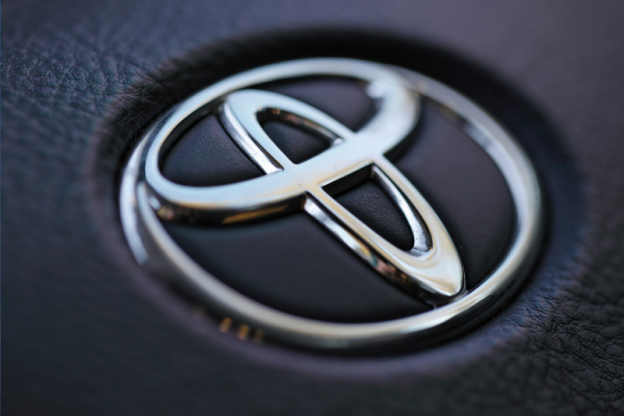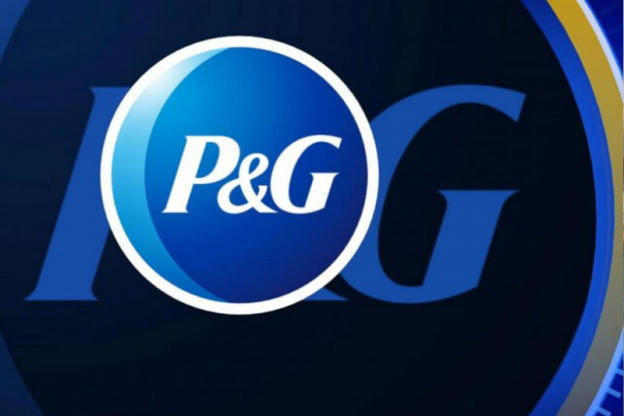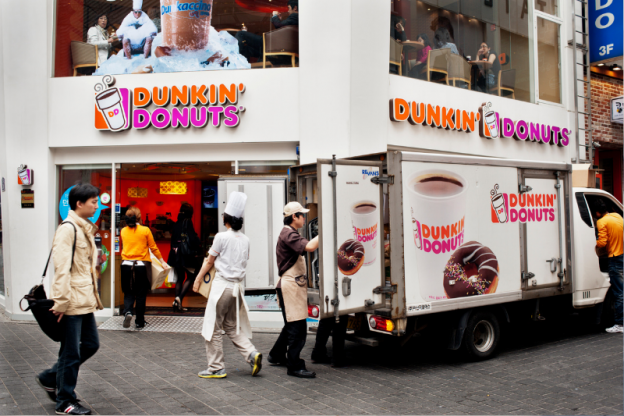This is a free Burger King SWOT analysis available for all students. You should use it only as a reference.
Company Details
| Founded: | 1954, Miami, Florida, United States |
| Headquarters: | Miami, Florida, United States |
| Acquisition date: | 1972 |
| Number of locations: | 17,796 (2018) |
| Parent organizations: | Restaurant Brands International, 3G Capital |
| Subsidiaries: | Moxies,… |
| Founders: | James McLamore, David Edgerton |
From its humble beginnings in the neighborhoods of Florida with the first Burger King restaurant opened, Burger King Corporation is a living example of succeeding at doing what they love. Today, the company boasts exceptional sales and brand recognition around the globe.
Even in the presence of big players in the fast-food market, such as McDonald’s, KFC, and so on, Burger King has managed to stay competitive by offering a wide range of products on its menu while retaining its signature taste and texture.
With the rising number of global locations and mounting revenue, Burger King is saddled to conquer new worlds.
Need a comprehensive Burger King’s SWOT Analysis with updated facts and figures? We have got it covered for you! Our team of expert researchers is adept at conducting an excellent SWOT Analysis of Burger King. So, place your order now!
SWOT Analysis of Burger King
In these times, Burger King is facing as many problems in the form of weaknesses and threats as it is having competitive advantages in the form of strengths and opportunities it can explore.
Through SWOT Analysis, we can determine what element is bound to benefit the company and what could make it suffer. Apart from a detailed view of each aspect in the analysis portion, SWOT Analysis can also be displayed in the form of a table with four quadrants inside a square.
Before we move on to the table, let us take a deep look into both internal and external factors of the SWOT Analysis.
Burger King Internal Factors
Both strengths and weaknesses of a business are termed as internal factors as they are in control of that business. In the case of Burger King, we will study these internal strategic factors or aspects before moving on to the external strategic factors.
💪 Strengths
Any competitive advantage that Burger King has over its competitors could be termed as a strength.

Global Footprint
One of the major strength points for Burger King is its global presence. The company has around 19,000 stores in over 100 countries. On any given day, the company serves millions of customers, with a grilled chicken burger and other items, from all of its locations. The sales put Burger King in the big league.
Superior Management Strategies
Burger King appointed a young CEO to turn around the company in its finances and outlook. The bet paid off and the company re-defined itself to be a place for the new generation. This helped the company in gaining new customer bases.
Efficient Franchising Model
Apart from being a well-oiled franchising model, Burger King is also one of the most lucrative ones for investors around the globe. It has a franchising fee of about $50,000 and the requirement of initial investment to be only a little over $300,0000.
Diverse Menu
Another thing that sets Burger King apart from its competitors is its diverse menu that also serves beef patty burgers prepared with exotic ingredients. Other fast-food chains lack variety in their menus whereas Burger King is known to empower customers with countless options.
Continuous Innovation
Burger King Corporation has never shied away from betting in the future and reaping impossible rewards. In 2019, the company finally launched its “Impossible Whopper”, a plant-based alternative to its bestseller grilled chicken burger. This helped the company in attracting new customers resulting in achieved goals.
Enterprising Marketing Campaigns
Burger King understands the true purpose of marketing – to convey a message so strong and moving that everybody starts talking about it. From rotting natural food in 34 days to other outrageous, even morbid advertisements, Burger King serves and dishes out its message loud and clear.
Healthy Competitive Options
Burger King does not claim to offer the healthiest food options in the burger fast food restaurant market. Still, it is healthier in terms of different offerings for a wide range of customers with burgers prepared with quality ingredients.
🤒 Weaknesses
The inherent flaws in a company’s business model or operations are called a weakness. The weaknesses in Burger King restaurants are as follows.
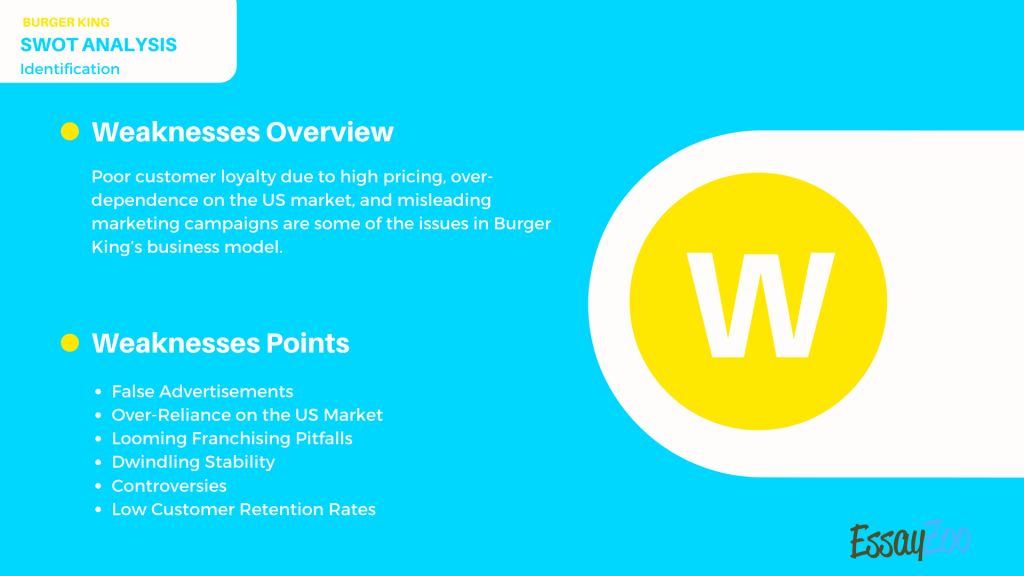
False Advertisements
Misleading ads can lead a brand into muddy waters by tarnishing its repute and consumer trust. Burger King recently found itself in such a scenario where it had to be reprimanded to mislead customers about its plant-based options.
Over-Reliance on the US Market
Burger King is a burger fast food restaurant that is heavily reliant on the US market for its revenue and growth streams. Nearly 44% of the revenues are generated inside the US. This dependency can be fatal for the business.
Looming Franchising Pitfalls
Although Burger King is effectively managing its franchising structure, a fast-moving franchising model can threaten its sustainability. Subway met the same fate some years ago.
Dwindling Stability
Burger King has swapped over 6 owners in its lifetime. Every time this happens, the business plan and operations often get disrupted. Burger King faces this threat almost every few years.
Controversies
Burger King faced a lot of backlash for poor decision making, from using horse meat in its products to offering meat-based options to vegans, the company has had a fair share of controversies that damaged the company’s trust and name.
Low Customer Retention Rates
Burger King does not offer much value for its products over price. This led to customers flocking around other companies.
Burger King External Factors
External factors are some of the aspects of business that are not in control of the company, Burger King fast food restaurant in this case. These are called opportunities and threats.
🤑 Opportunities
Opportunities are the windows or potential for Burger King where it can not only overcome its weaknesses but also improve the overall health of the business.
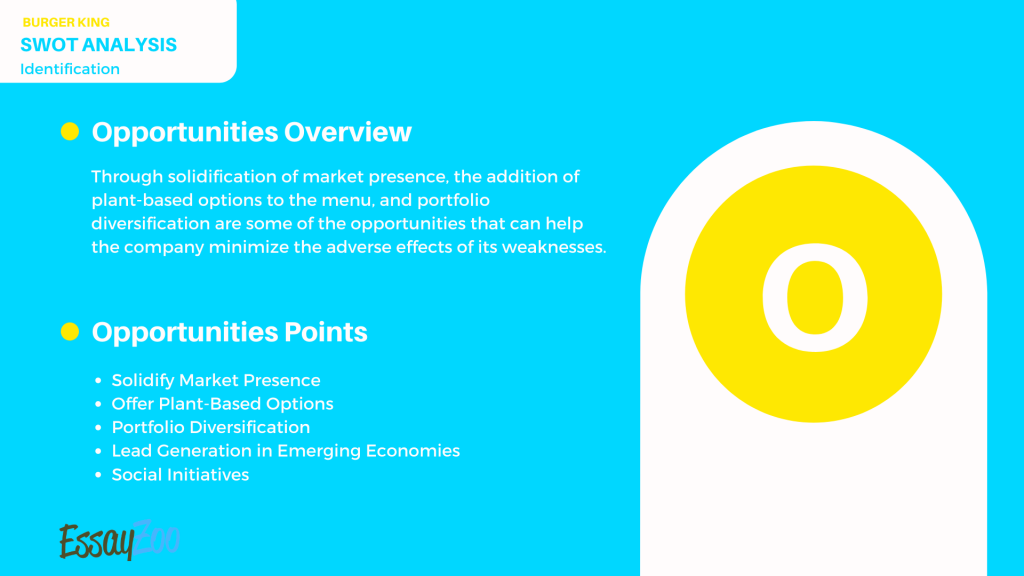
Solidify Market Presence
Franchising businesses need to exert their hegemony by offering locations at every strategic point. This allows the company to cater to the needs of clients without sacrificing them to other companies.
Offer Plant-Based Options
Through real plant-based options, Burger King can get a wide array of customers who prefer alternative dietary products.
Portfolio Diversification
Through diversification of portfolio and covering maximum bases of the retail side of the business, Burger King can capture a large segment of the market.
Lead Generation in Emerging Economies
Emerging economies such as India and China offer a great opportunity for Burger King to expand and loosen its over-reliance on the US markets.
Social Initiatives
During and after the pandemic, Burger King participated and even devised many social initiatives to not only improve its sales but also enhance its customer relations through trust.
😨 Threats
Those external strategic factors that can expose the business to serious risks in both the short and long term are known as threats. Burger King faces threats from the following dimensions.
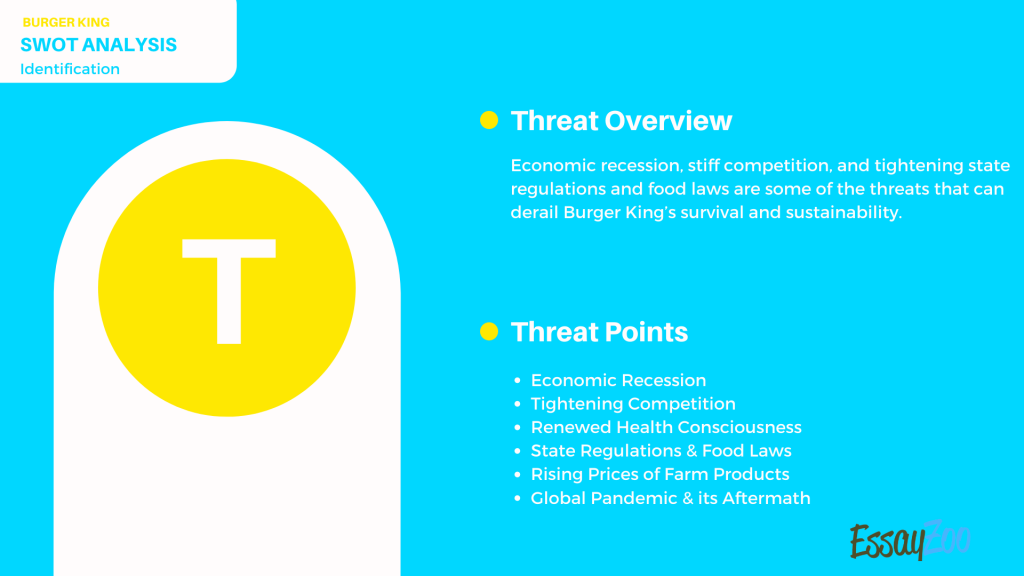
Economic Recession
The recent economic recession has shown that even large food chains are not recession-proof. During the pandemic, many franchises of Burger King declared either bankruptcy or receivership.
Tightening Competition
“Burger Wars” with other players in the market, such as McDonald’s, Domino’s, and KFC are threatening Burger King in terms of market share, profitability, and sustainability.
Renewed Health Consciousness
Most fast food, including those offered at Burger King, is categorized as unhealthy. With the rising health consciousness among customers, the company can face plummeting sales and revenue in both the short and long term.
State Regulations & Food Laws
There is mounting pressure on governments to deal with issues related to health problems linked with food. If the numbers of people getting obese and diabetic remain on the rise, it is possible that Burger King and other fast-food chains could face a state noose in the form of stiff laws and regulations.
Rising Prices of Farm Products
The supply of farm products is always on the rise yet the supply has been in decline for quite some time. This situation is leading companies like Burger King serves beef patty and now plan on exploring or even creating avenues to meet demands, resulting in poor profitability and sustainability.
Global Pandemic & its Aftermath
Due to the COVID-19 pandemic, the conventional business model of a burger fast food restaurant that requires patrons to come out and eat at the location is facing a hard time. Many franchises of Burger King have struggled in the pandemic and afterward with many declaring bankruptcy or going under.
Burger King SWOT Table
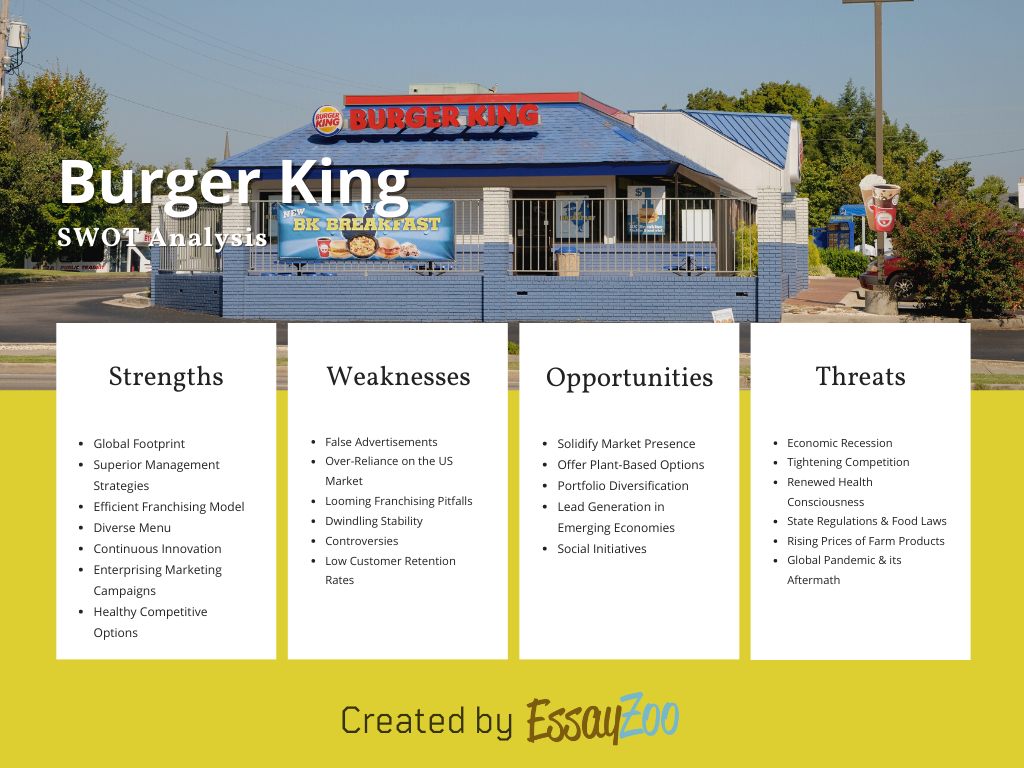
Strengths
- 💪 Global Footprint
- 💪 Superior Management Strategies
- 💪 Efficient Franchising Model
- 💪 Diverse Menu
- 💪 Continuous Innovation
- 💪 Enterprising Marketing Campaigns
- 💪 Healthy Competitive Options
Weaknesses
- 🤒 False Advertisements
- 🤒 Over-Reliance on the US Market
- 🤒 Looming Franchising Pitfalls
- 🤒 Dwindling Stability
- 🤒 Controversies
- 🤒 Low Customer Retention Rates
Opportunities
- 🤑 Solidify Market Presence
- 🤑 Offer Plant-Based Options
- 🤑 Portfolio Diversification
- 🤑 Lead Generation in Emerging Economies
- 🤑 Social Initiatives
Threats
- 😨 Economic Recession
- 😨 Tightening Competition
- 😨 Renewed Health Consciousness
- 😨 State Regulations & Food Laws
- 😨 Rising Prices of Farm Products
- 😨 Global Pandemic & its Aftermath
Read More:
- SWOT Analysis of Tesla Company
- Zara SWOT 2022
- In-Depth SWOT Analysis of Dunkin Donuts
- A SWOT analysis for Johnson&Johnson’s company
- Comprehensive SWOT Analysis of Nike
- SWOT Analysis: UPS
- Strategic SWOT Analysis of Chick-fil-A
- Strengths, Weaknesses, Opportunities, and Threats of Procter & Gamble
- [2022] Samsung SWOT Analysis
- Facebook SWOT Analysis
- Swot Analysis of Starbucks’s Current Situation
- Disney Company: SWOT Analysis
- Netflix SWOT Analysis 2022
- Walmart SWOT Analysis Essay
- Toyota SWOT Analysis 2022: A Detailed Report
- McDonalds SWOT Analysis In 2022
- Free Amazon SWOT Analysis
- Coca Cola: Strengths, Weaknesses, Opportunities, Threats
- Informative SWOT Analysis of Google
- Best SWOT Analysis of Airbnb
- SWOT Analysis of Apple

